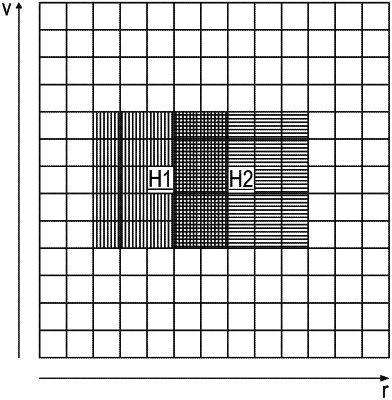| CPC G01S 7/412 (2013.01) [G01S 7/352 (2013.01); G01S 7/415 (2013.01); G01S 13/584 (2013.01); G01S 13/931 (2013.01)] | 10 Claims |

|
1. A device (20) for determining a radar target list, comprising:
a frequency-modulated multi-pulse radar sensor (18) for generating and preprocessing sensor data;
an input interface (22) for receiving the preprocessed sensor data from the frequency-modulated multi-pulse radar sensor (18) with information on detected strengths in high points (H1, H2) in a distance and/or velocity dimension and in predefined neighborhood ranges of the high points in the distance and/or velocity dimension;
an analysis unit (24) for determining mutually adjacent high points with overlapping neighborhood ranges based on the preprocessed sensor data;
an adjustment unit (26) for adjusting the neighborhood ranges of the mutually adjacent high points, the adjustment unit (26) being designed to shorten the neighborhood ranges of the mutually adjacent high points (H1, H2) in the direction of the other high point in each case; and the shortening is limited by a predefined minimum length; and
an evaluation unit (28) for determining a radar target list with information on targets (17) in a field of view of the frequency-modulated multi-pulse radar sensor based on the high points and the neighborhood ranges thereof.
|